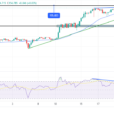As a shareholder, you do well to place more emphasis on risk than on reward. Corporate management usually does the opposite, and this is why most large acquisitions fail.
In fact, I assume from the start that an acquisition will fail — or at least will turn out not nearly as profitable as the picture management paints.
For starters, a buyer typically pays too much. An old Wall Street adage comes to mind: “Price is what you pay; value is what you get.” It all starts with a control premium. When we purchase shares of a stock, we pay a price that is within pennies of the latest trade. When a company is acquired, though, the purchase price is negotiated during long dinners at fine restaurants and comes with a control premium that is higher than the latest stock quotation.
How much higher? Acquisitions have the elements of a zero-sum game. Both buyer and seller need to feel that they are getting a good deal. The seller has to convince the company’ s board and its shareholders that the sale price is high (unfairly good). The buyer in turn needs to convince his constituents that they are getting a bargain. Remember, both are talking about the same asset.
This is where a magic word — which must have been invented by Wall Street banks’ research labs — comes into play: “synergy.” The only way this acquisitions dance can work is if the buyer convinces his constituents that combining the two companies will create additional revenues otherwise not available, and/or it will eliminate redundant costs. Thus, the sum of synergies will turn the purchase price into a bargain.
If you examine why General Electric Co., for example, has been a subpar investment over the last two decades, you’ll find that it’s because of poor capital allocation. The company lost a lot of value in making destructive acquisitions — buying businesses at high prices, relying on false or unfulfilled synergies, and selling (divesting) at reasonable (or low) prices.












Leave A Comment